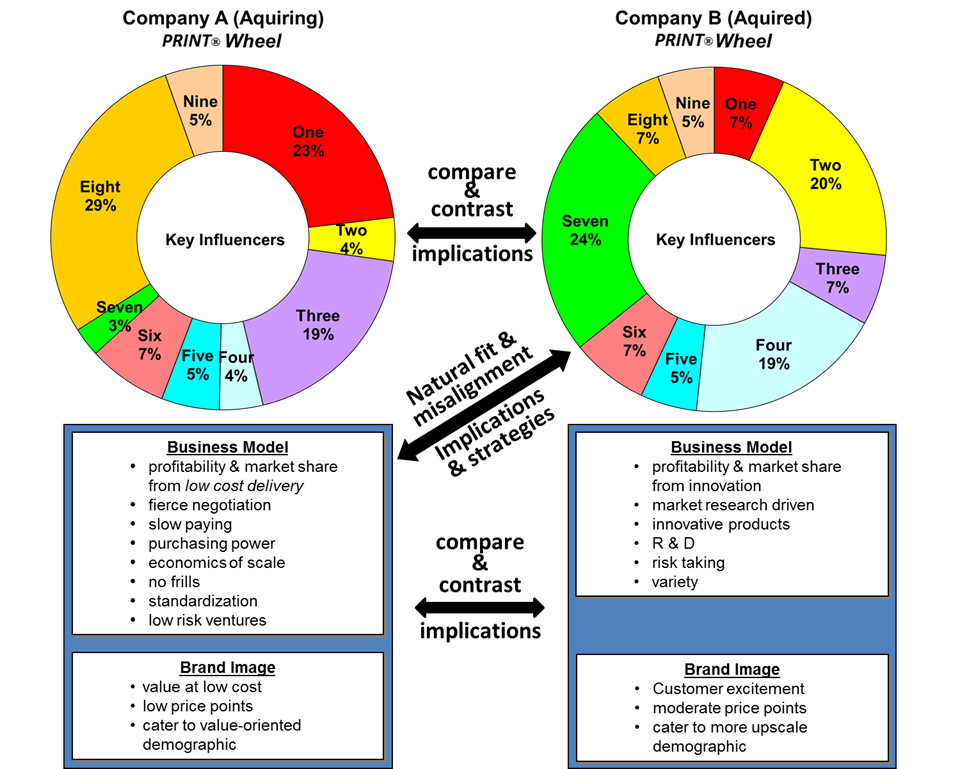By itself, change isn’t easy. Add in Triggers that lead to Shadow Behavior and change becomes a monumental task.
We often hear complaints about how people generally resist change. However, based on our research, people are not universally resistant to change. Instead, they only have a tough time accepting change that conflicts with their Unconscious Motivators®.
In this sense, change is a Trigger assaulting their core needs.
Using PRINT®, we identify the Unconscious Motivator® blocks that each person may have to change and then identify how to position the change to satisfy the Unconscious Motivator.
The result is an engaged team that not only buys into change, but can actually embrace it.
In the business world, change is often associated with mergers or acquisitions. Although each project varies, here’s a brief overview of steps we use to help you go through the process.
Step 1: Identify the influencers’ PRINT from both organizations (using a 15-minute online assessment) and display these in two PRINT Wheels (see colored graphs below).
Compare the two PRINT Wheels and analyze similarities and differences (e.g., what is valued, what drives behavior, how challenges are handled, what strengths exist, where are gaps in thinking and, most importantly, why are these so – an answer that only PRINT provides).
The segments in the following example represent the % of influencers in each company with the same PRINT.

Step 2: Through interviews with key sales, marketing, finance, operations, R&D and customer interface personnel – as well as research of promotional literature and web information (and sometimes through meetings with vendor and customer representatives) – both organizations’ business models and brand images are depicted in operationally defined terms. These are then compared (see business model and brand image definitions under the colored graphs below).
Step 3: Train key personnel in PRINT (i.e., the underlying motivations and resulting behaviors, strengths, challenges, values and perspectives of each of the nine Major PRINTs) and how to interpret a PRINT Wheel.
Step 4: Present the data. Key stakeholders see both organizations’ PRINT Wheels as well as operational definitions of the business models and brand images. Areas of fit and misalignment are then identified.
Step 5: Facilitate strategy sessions with key stakeholders. These meetings are designed to dig into potential culture clashes and identify why problems might occur. PRINT is used to address potential obstacles before damage happens and generate action plans that accelerate the assimilation process.
Step 6: Conduct follow-up meetings to determine persisting PRINT challenges (i.e., areas where conflict, poor buy-in and resistance may still exist.)
As you can imagine, PRINT similarities among influencers and the business model/brand images leads to easier transitions. By using PRINT, you experience a more “proactive merger” and less of a “merger by chance,” especially when blending people and personalities, synthesizing organizational goals, and maximizing fit.
>> See the Results from Others Who Have Used PRINT to Embrace Change
